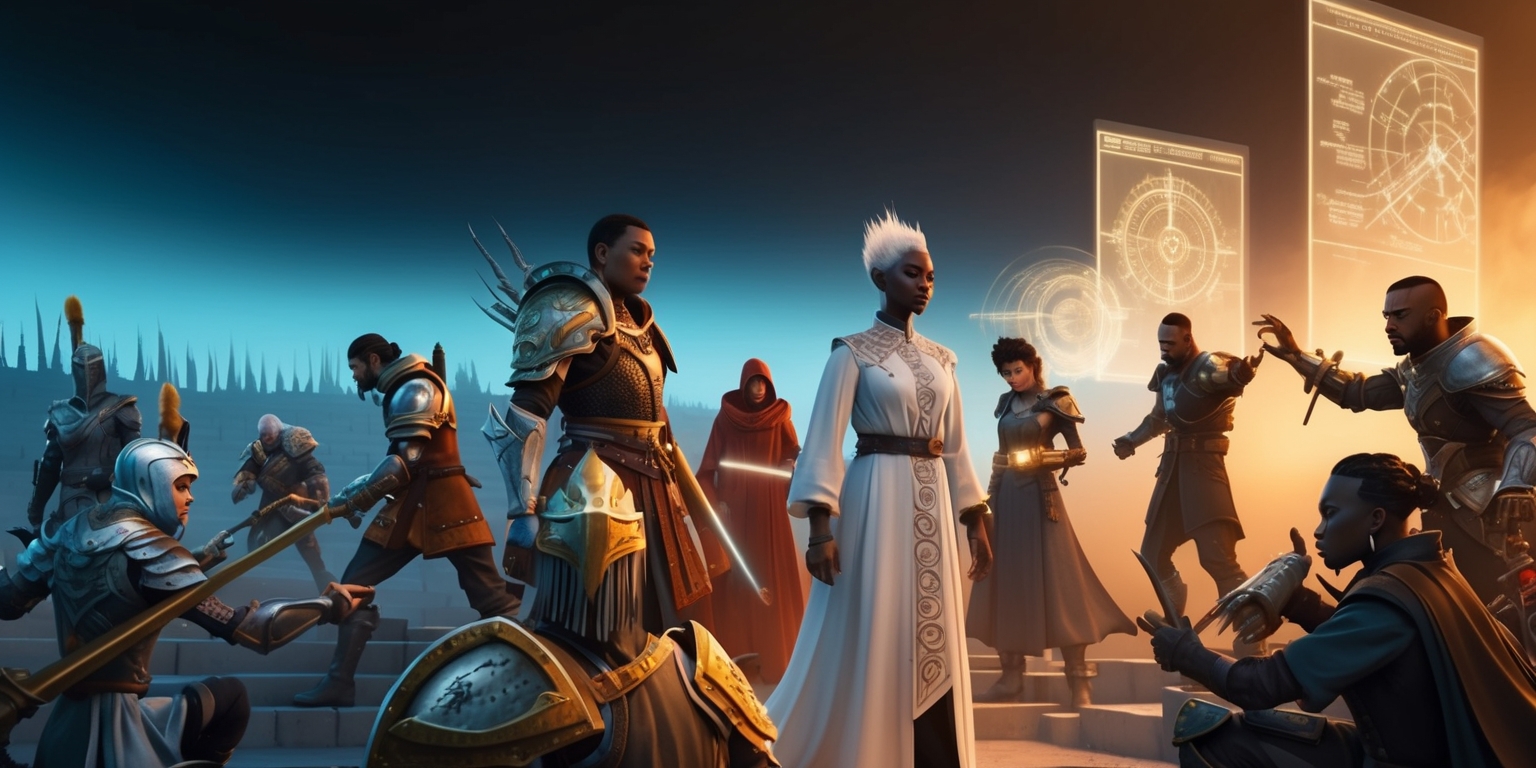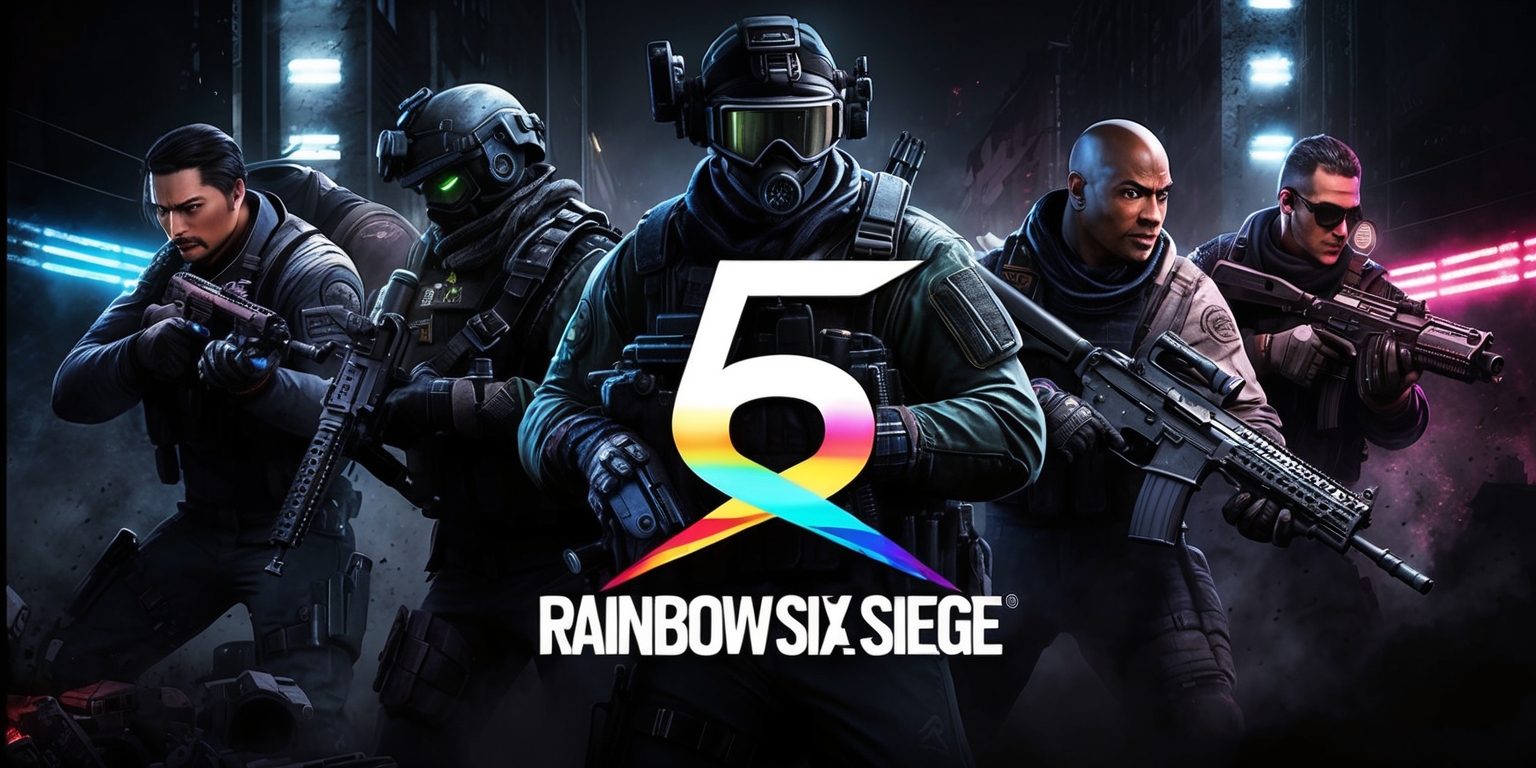 2025-06-12 05:26:37
2025-06-12 05:26:37 Reinvention of the Siege: Redefining Tactics, Community, and Strategy
The evolution of a long-established online tactical experience is evident in the latest iteration of Rainbow Six Siege, now branded with an 'X.' This update signals both a celebration of a decade-long legacy and a reinvention designed to welcome a broader audience. With refined mechanics and an extensive array of operators, the game balances intense strategic play with increased accessibility. The overhaul focuses on polishing its core siege-style gameplay while addressing community concerns from past assessments. In this refreshed environment, every corridor, gadget, and interaction contributes to a more thoughtful tactical simulation that challenges players to master a refined set of tools and strategies without sacrificing the series’ competitive intensity.
Renewed Gameplay Dynamics and Tactical Objectives
Central to this update is the Alternatively: At its core, this update spotlights the continued emphasis on immersive objective-based action. In each match, teams are divided into attackers and defenders who begin their engagements with a vital preparation stage. Attackers deploy reconnaissance drones to locate the objective or reveal enemy positions, while defenders focus on fortifying key structures within the building. The interplay of careful planning and split-second decisions encapsulates the mobile yet deliberate pacing of the rounds. Enhanced environmental interactions invite players to modify terrain using explosives or gadgets, making every encounter unpredictable. The game’s fundamental design, the delicate balance between calculated aggression and strategic defense, remains intact and is now complemented by additional features that encourage innovative approaches to classic siege combat.
Diverse Characters and Unique Operator Tools

The update reaffirms the importance of individual operators, each equipped with distinctive tools that shape tactical possibilities. Every operator is assigned to play on either the attacking or defending side, ensuring that each character’s role is both specialized and strategically essential. For instance, one operator can deploy devices to breach surfaces with precision, while another fortifies entry points with advanced barricades that surpass typical construction. These choices are integrated with a reputation system that rewards thoughtful play and considerate communication during high-stakes battles. Each operator's strengths stimulate unique playstyles, encouraging players to experiment with various combinations and strategies. Over time, these nuances create a rich tapestry of tactical interactions, requiring teams to think ahead and adapt continuously to shifting in-game variables.
Enhanced Social Features and Community Management
A particularly game-changing element of this iteration is the robust system designed to moderate community interactions. Historically, online squads faced challenges with repetitive disruptive behavior, and the new reputation mechanics now tie actions to direct in-game rewards and penalties. This visible system, which classifies behavior into distinctive statuses, actively influences player dynamics. It fosters an environment where respectful communication and supportive teamwork are acknowledged and rewarded, while repeated negative actions result in tangible drawbacks. Complementing this, a newly integrated communication wheel allows players to signal crucial tactical updates without needing to rely exclusively on text chat. Such features offer a refined balance between competitive intensity and community protection, ensuring that even new recruits can join without apprehension or undue exposure to negativity.
Refined Map Design and Environmental Interactivity
The game’s evolving landscapes continue to uphold their significance as a battleground for tactical ingenuity. Classics such as Bank, Clubhouse, and Chalet have undergone subtle yet effective overhauls to not only enhance their visual appeal but also add dynamic elements to gameplay. New destructible features mean that environmental hazards – such as reactive gas pipes or temporarily obstructive flames – now play a strategic role in engagements. Operators can use these unpredictable hazards to their advantage, sometimes altering the flow of a match in unexpected ways. Additionally, the improved lighting techniques and the introduction of clear shadow-casting elements contribute to a more realistic and immersive battlefield. These details encourage players to be more aware of their surroundings and adapt their strategies in real-time.
Innovative Operator Adjustments and Utility Revisions
Part of the overhaul centers on reworking key operators to further enhance distinctive tactical roles. A prime example is the operator known for defending frontlines with a portable shield. In this refreshed format, the shield can now be deployed as a stationary barrier, offering both protection and a platform for offensive actions. The once time-consuming process of switching between shield and armament is now streamlined by allowing the shock pulse feature to be activated remotely. Such modifications illustrate a broader recalibration of in-game physics; for example, electrical elements have been normalized, ensuring that environmental hazards like electrified barricades no longer impose damage by default. This adjustment preserves the integrity of tactical planning while reducing the likelihood of accidental hindrances that could disrupt the flow of combat.
Introduction of the Dual Front Mode and Fostering Fluid Engagements
A notably bold expansion in the game’s repertoire is the introduction of Dual Front, a mode that redefines team dynamics by featuring a 6v6 format. In this mode, each team simultaneously plays the roles of attack and defense across a sprawling new arena known as District. Unlike classic modes, Dual Front integrates the concept of respawns, allowing for a continuous cycle of engagements where every round feels fresh and unpredictable. The rules compel teams to capture enemy sectors sequentially while defending their own with equal fervor. This design encourages adaptive gameplay: players must quickly switch between offensive maneuvers and strategic defense. In addition, teams have access to a rotating selection of operators, prompting a constant re-evaluation of tactics. The mode's fast-paced yet methodical approach aims to appeal to both seasoned practitioners and newcomers intrigued by dynamic, open-ended objectives.
District Map: A Labyrinth of Multi-Level Strategy
The District map, the largest arena introduced to date, invites exploration of multi-tiered environments that demand acute situational awareness. Designed with sprawling interior layouts, the map offers a blend of tight corridors and expansive spaces that challenge conventional tactics. Players must navigate multiple floors, corridors laden with destructible elements, and strategically positioned sniping spots. The external areas, though providing only temporary refuge, increase the risk and reward dynamics as players traverse between the building clusters. District’s design emphasizes the importance of verticality in modern tactical engagements. The positioning of defensive gadgets and the thoughtful placement of cover create a nuanced gaming experience where every inch of space matters. Operators are encouraged to use every asset available, whether leveraging elevated vantage points or exploiting hidden pathways in a web of urban corridors.
Expressive Movement and Tactical Audio Cues
Movement remains a central component of the gameplay identity in this update, intentionally designed to be deliberate rather than rapid-fire. Characters ambulate with a measured pace that demands careful planning. As players traverse these environments, the distinct soundscape stands out – every footstep resounds with clarity, providing crucial auditory cues about opponents’ positions. This design choice reinforces a slow-burning intensity, where stealth and precision are paramount. The acoustics are finely tuned so that even a slight rustling can prompt an immediate tactical reassessment. New players, in particular, will face an initial learning curve as they Strike an equilibrium between the necessity for rapid intervention and the risk of inadvertent disclosure of their position. The system thus rewards both patience and tactical acumen, ensuring that every engagement is underpinned by an intricate mesh of visual and auditory signals that enhance the overall immersion.
Embracing a Complex and Evolving Operator Roster
The sheer number of available operators now exceeds 70, each offering unique abilities and specialized roles that contribute to an extensive tactical ecosystem. New editions of the game emphasize learning and adaptation as key components for success. In-game tutorials and detailed character pages serve to guide players through the nuances of each operator’s capabilities and limitations. This approach diminishes the initial friction often experienced by newcomers while maintaining a high level of depth for veterans. The curated selection process during respawns allows teams to adjust their composition according to the evolving demands of the match. The dynamic interplay between operators, when coupled with fixed core objectives, creates a complex network of potential strategies and counter-strategies that pushes tactical mastery to new heights. This robust variety ensures that no two matches play out in the same way, keeping the combat consistently engaging and unpredictable.
Modernized Player Onboarding and Tutorial Integration
In this refreshed experience, the entry point for new players has been carefully rethought to combine depth with approachability. Recognizing that the intricate mechanics and expansive operator list might initially overwhelm novices, the game now offers a suite of tutorials and training modes that break down the essentials. Each operator is accompanied by straightforward guidance that explains their role, available gadgets, and optimal use cases. These instructional elements are both interactive and visually engaging, which encourages an organic learning process without alienating experienced players. New players can experiment with different strategies in controlled environments and gradually transition to competitive matchmaking. This comprehensive onboarding process signals a deliberate effort to build a healthier community that prizes skill development, measured progression, and positive interactions over hasty, unstructured play.
Nuances of Tactical Interaction and Real-Time Adaptation
Every match is designed to feel both familiar and refreshingly unpredictable. The level design, operator abilities, and dynamic environmental effects converge to create highly responsive tactical scenarios. Players are prompted to adapt rapidly, switching roles or strategies as the situation evolves. The fluctuating balance between offense and defense is reminiscent of a high-stakes game of chess, where every move has contemporaneous consequences. As friendly fire incidents become less common, attention is drawn to methodical planning, thorough reconnaissance, and clear communication. Such moments of real-time adaptation require players to be alert to both micro-level engagements and macro-level strategy shifts. The rich interplay between precise operator roles and an environment that responds to every action keeps the gameplay experience consistently engaging and challenging without sacrificing the series' foundational design elements.




Leave a comment
Your comment is awaiting moderation. We save your draft here
0 Comments